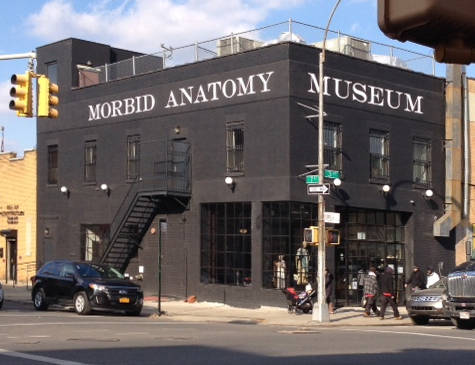All photographs other than the first, which is by Ruth M. Landow, have been provided by the Museum. Click on images to enlarge them.
A few weeks ago when I reviewed the Metropolitan Museum of Art’s excellent Death Becomes Her: A Century of Mourning Attire, I noted that the curator and exhibition designers, who provided very informative chat labels, failed their vistors in only one area, the lack of representative hair ornaments and jewelry. The dominant note of the Met show was the mourning attire of the top one percent — the dominant note sounded by mourning dresses worn by Queens Victoria and Alexandra — and that's entirely appropriate given that throughout the ages only the very wealthiest could afford to commission, purchase, and collect the finest works of art. Projected on one wall the words of a well-known American woman author — was it Louisa May Alcott? — complained how much it cost to outfit a family in proper mourning. I heard vistors wondering aloud what members of the middle middle and lower middle classes, much less factory workers or miners and their families wore.


Left: The Museum of Morbid Anatomy. Right: The museum's reference library.
The Met show included very few examples of the kind of objects that formed an entire art and culture of nineteenth-century mourning, including daguerreotypes and paintings of the dead. The Art of Mourning at Brooklyn’s tiny Museum of Morbid Anatomy, which draws upon several private collections, includes dozens of objects that provide the needed context for the exhibition of that museum on Fifth Avenue in Manhattan. We have, for example, brooches and a rosary made from the hair of the deceased as well as the more expected examples of in memoriam jewelry.



Left: A late-nineteenth-century American Hairwork Rosary from the collection of Karen Bachmann. Middle: A mid-nineteenth-century brooch made from the white hair of an elderly person from the collection of Jennifer Berman. Right: A mid-nineteenth-century locket in black and white enamel on gold from the collection of Evan Michelson.
Joanna Ebenstein, the museum’s Creative Director who was the curator of The Art of Mourning, explained that the museum is conceived as a place for “things that fall through the cracks” but deserve to be seen, so perhaps we should think of it as the Museum for Things Unnoticed or Forgotten. Certainly, it would be difficult to find a museum more different from the immensely grand, enormously wealthy Metropolitan Museum of Art, which puts on three or four major exhibitions and many smaller ones at the same time. (As I write, the Met, in addition to Death Becomes Her, has several blockbuster shows, such as Madame Cézanne and Cubism, which has the largest collection of Cubist art in private hands [though not for long; it's apparently been promised to the museum] plus Bartholomeus Spranger: Splendor and Eroticism in Imperial Prague, and smaller shows, such as El Greco in New York, Treasures from India: Jewels from the Al-Thani, Thomas Hart Benton's America Today Mural Rediscovered, Tullio Lombardo's Adam: A Masterpiece Restored plus 21 (!) other exhibitions.) Clearly, compared to the Met this tiny Brooklyn museum is small potatoes, and yet its single-room exhibition (see photos below) was well worth the visit, since like the Met it preserved important parts of the past that would otherwise slide into oblivion, matters that we should remember.


Two views of the exhibition. The case and the wall behind it have many examples of photographs of the dead, including one of a mother holding her dead child as well as photographs of children and adults in their coffins.
As this valuable exhibition makes clear, people of nineteenth-century America, England, and Europe did not merely wear mourning attire, covering themselves with symbols and signals of their grief. They also surrounded themselves with objects that served the same purpose — permanent mourning wreaths, death masks, hand worked images of death and mourning that, talisman-like, contained the hair of the lost but not forgotten. The exhibition contained the perfect example of trying to keep the memory of the dead from fading and becoming lost in the photographs and paintings that combine the dead and the living. The tamest (or most orthodox) take the from of paintings or photographs of family members against a wall on which hang images of the dead, the most poignant the image of a mother holding her dead infant. Then there are the photographs of ghostly images of the dead appearing above the heads of the living. Some of these were sold by swindlers to grieving family members as spirit photographs, whereas others simply combine the images of living and dead in the kind of sacra conversatione — that image set in the virtual reality of hope and belief — found so widely in religious art of the Christian West.



Left: Memorial Wreath made of tiny glass beads from the collection of Tracy Hurley Martin. Middle: Memorial hairwork on glass from the collection of Jennifer Berman. Right: L’Inconnue de la Seine — one of the best known of all death masks, from the collection of Evan Michelson.
Created 21 January 2015